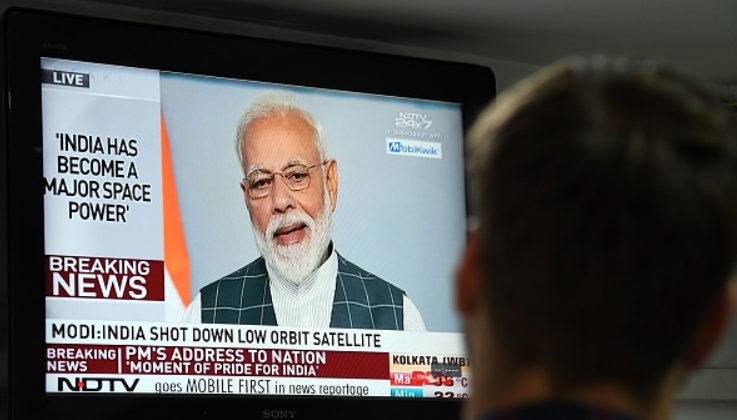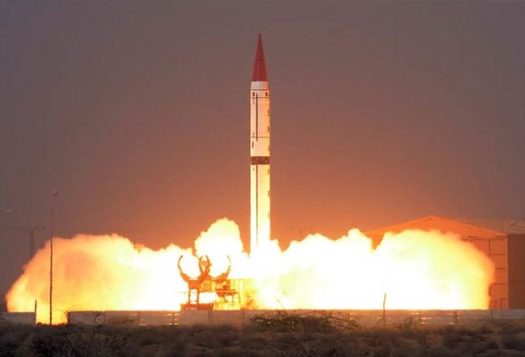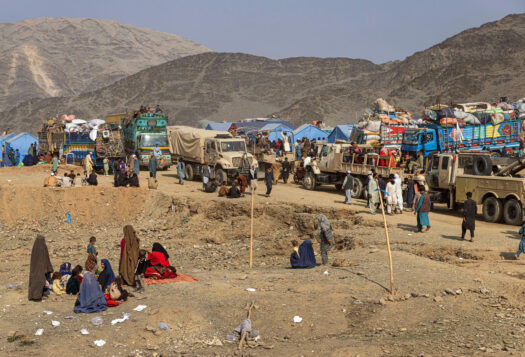
On January 31, the U.S. and Indian national security advisors met in Washington for the first convening of the initiative on critical and emerging technologies (iCET). Along with artificial intelligence (AI), quantum computing, 5G/6G, biotech, and semiconductors, space is a major focus area of iCET. As states race to dominate the space domain and private players blaze separate paths toward exploration, a new era of space security and innovation has arrived, forging new avenues for India’s space industry and cooperation with the United States. The iCET meeting format provides the United States and India an opportunity to set an ambitious new space agenda.
New Trends in the Space Economy
The space ecosystem is growing. Globally, the space economy is currently valued at over $400 billion and is primarily dominated by satellites. However, with the emergence of the private space industry, newspace has arrived with the potential to increase the global space economy to over $1 trillion by 2040. Newspace is driven by private sector innovations and includes areas like space tourism, in-orbit manufacturing, space situational awareness, and space resources. With newspace comes new opportunity.
As states race to dominate the space domain and private players blaze separate paths toward exploration, a new era of space security and innovation has arrived, forging new avenues for India’s space industry and cooperation with the United States.
Newspace opens opportunities for U.S.-India cooperation. While the United States and India have shared interest in shaping a rules-based order in space, bureaucratic barriers have hindered state-to-state cooperation in other domains. Through the private sector, space companies can work together in component manufacturing and ensure smooth supply chains. Additionally, lunar missions herald an emerging cislunar economy, opening new avenues for economic cooperation and employment generation between the United States and India. While India can benefit from U.S. innovation, the United States can leverage India’s cost efficiency in labor and manufacturing. Together, like-minded partners can usher in a new era of newspace and cislunar economy.
New Delhi has instituted space reforms to encourage private sector involvement in the space domain. In 2020, India opened the space sector to private players as part of larger industry reforms by the Modi government. Since then, new institutions have come up to bolster the nascent but growing private sector space economy like New Space India Ltd (NSIL), Indian National Space Promotion and Authorization Centre (IN-SPACe), and Indian Space Association (ISpA). Furthermore, to foster innovation, the Indian Space Research Organization (ISRO) is actively transferring technologies to the private sector to help commercialize the space industry, and space challenges by iDEX are giving impetus to space startups. Looking ahead, this year will be crucial for India’s space ambitions as New Delhi shapes its space policy.
Common Threats
Chinese space capabilities are increasingly seen as a threat to New Delhi. Between 2019 and 2021, Chinese and Russian operational satellite fleets grew over 70 percent, evidencing China’s growing presence in space and raising concerns about militarization. Moreover, China’s advancements in space have also prompted fears over space colonization. China has already found success in landing a rover on the moon’s far side. In addition, in 2021, China planted its PRC flag on the lunar surface and became the first country to execute robotic docking in lunar orbit. Advancements in Chinese antisatellite capabilities have further sparked national security concerns. With growing ambitions and capabilities, China poses a burgeoning threat in space, particularly should capabilities find military uses.
New trends in the space economy coupled with threats like the weaponization and colonization of space present new motivations for India and the United States to capitalize on economic prospects and contain common challenges. The iCET meeting presented an opportunity to get started.
An Ambitious U.S.-India Space Agenda
While the United States can leverage its innovation and experience from having a mature private space sector, India brings lessons learned from running a highly cost-effective space program with skilled talent. Together, the two countries can augment each other’s space capabilities and create new economic opportunities. To do so, the United States and India should cooperate in the following ways.

- Regulatory and licensing ease. The United States should work towards easing export controls on components and labor involved in space technology and related work for civilian use. Similarly, India must provide more regulatory clarity with safeguards for intellectual property and liability insurance to ensure ease of doing business in the space sector. Currently, International Traffic in Arms Regulations (ITAR) restrictions in the United States make licensing onerous while the novelty of the sector in India means much work needs to be done and policy uncertainty looms large.
- A lunar economy agenda. Thus far, India has not pursued a focused lunar economic agenda, choosing instead to maintain its strategic autonomy by not signing onto either of the two global lunar programs. India could unlock its space service and manufacturing capability by signing on to U.S. Artemis Accords, granting New Delhi a clearly defined, forward-looking lunar mission with a designated role for the private sector. This will not only aid India’s growing private sector but save costs for partners like the United States as India’s rising startup and private space players provide low-cost services and space manufacturing.
- Creating “rules of the game” in space. India and the United States should work together to establish rules of the game in space exploration, prevention of space weaponization, space colonization, resource mining, and other aspects relating to space activities by state and non-state actors. Since the space industry is still in its nascent stages, an opportunity exists for the two countries to provide leadership in setting the policy agenda with like-minded partners.
- Securing the Indo-Pacific. The United States and India can play a key role in further ensuring Indo-Pacific security through remote sensing of sensitive areas, reliable communication networks, and disaster planning. Such efforts will augment existing avenues of intelligence sharing.
- Tracking space objects. The United States and India recently signed the Space Situational Awareness (SSA) agreement, which allows information sharing on space debris and other space threats. Information sharing should be increased and serve as a tool to monitor space activities by threat actors. To that end, SSA must be actively operationalized and more structures to share space information with like-minded partners must emerge.
- Conducting tabletop exercises. Given the novelty of challenges and responses in the space realm and the growing militarization of space, the United States and India must pursue tabletop exercises and crisis simulations relating to space escalation and space wars. Already, the United States is India’s largest bilateral and multilateral military exercise partner, hence it is a logical extension to increase joint exercises and planning in the space realm.
India and the United States should work together to establish rules of the game in space exploration, prevention of space weaponization, space colonization, resource mining, and other aspects relating to space activities by state and non-state actors.
As India’s space sector takes off, it holds great economic promise domestically and internationally. While share values bind U.S. and Indian goals in space, cost-efficient supply chains and space programs attract private firms. Furthermore, the U.S. private sector’s efforts to capitalize on the cislunar economy can be strengthened through partnerships with India’s rising space startups. As major spacefaring nations, India and the United States have a critical role to play in securing a safe space for the world and ensuring policies related to this sector reflect values espoused by the world’s two largest democracies.
***
Image 1: Arun Sankar/AFP via Getty Images
Image 2: Prakash Singh/AFP via Getty Images


